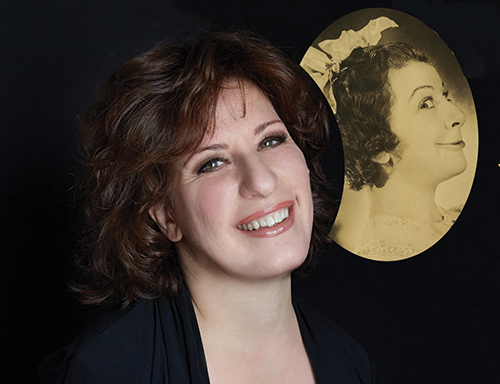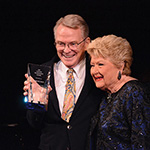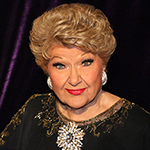Josephine Sanges
The Funny Girl in Me:
Josephine Sanges Sings Fanny Brice
Laurie Beechman Theatre, NYC, July 27, 2022
Reviewed by Bart Greenberg

Photo by Bill Westmoreland
Three separate stories were told within Josephine Sanges’ show at the Laurie Beechman Theatre, The Funny Girl in Me. One of those stories is about the real Fanny Brice, focusing on her original material— from “Sadie Salome Go Home” to the climatic “My Man.” The second story is about the history of the musical Funny Girl and the rise of the iconic Barbra Streisand. This was illustrated by a copious sampling of the Broadway score and its subsequent filmic sequel, Funny Lady. Finally, and most touching, is the tale of how the singer’s being cast in a local production of Funny Girl led to major professional and personal discoveries. Amazingly, all three threads were woven together with ease and lucidity and just the right theatrical touch, by director Jeff Harnar—for example having Sanges holding the original sheet music of “My Man,” which prominently featured a photo of the real Fanny.
Sanges possesses a big and flexible voice, capable of matching Streisand’s power while at the same time avoiding any attempt at imitation. She inhabited the real Brice’s personality numbers, which in some ways became even more interesting. She made it clear why such major songwriters such as Irving Berlin (who wrote “Sadie Salome” with Edgar Leslie) and Bert Kalmar and Harry Ruby (who provided the weirdly twee “Quainty Dainty Me”) wrote for Brice. Both numbers allowed Sanges to demonstrate solid comic timing and to create differing characters.
Her delivery of the Funny Girl songs showed a specific but very different personality as she imbued herself with an iron-willed nerve. As she stormed into “Don’t Rain on My Parade,” the (unneeded) mic stand was in her way, and she threw it aside as a perfect embodiment of the dramatic moment. Her blending of “More Than You Know” and “The Music That Makes Me Dance,” a combination of songs of the two Fannies, brought out a desperate emotional need and an aching vulnerability. Sanges’ performance here was heartbreaking as she drew the audience into her world.
Music director John M. Cook provided essential support as pianist and as vocal partner in a great medley of “How Lucky Can You Get?,” “His Love Makes Me Beautiful,” and “I Want to Be Seen With You”—a reflection of her romantic life. As a songwriter, Cook contributing a beautiful ballad, “Touching Magic,” which managed to be both contemporary and classic at the same time and intertwined the three stories of the show.
Throughout, Sanges was in total control of the stage and of her material. Her show offered a fascinating historical perspective on two of the biggest stars of their times, and it also served as a highly personal journey that certainly moved her audience.





